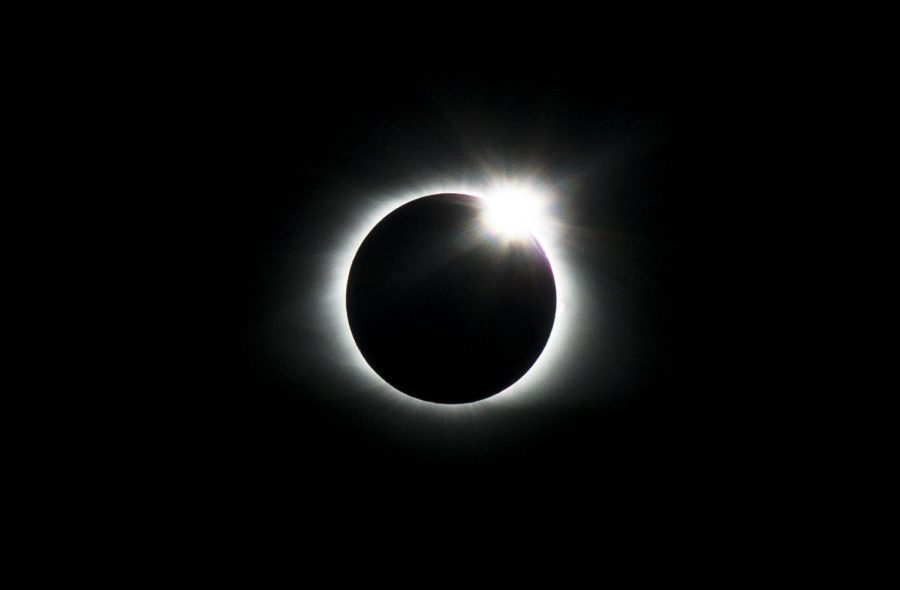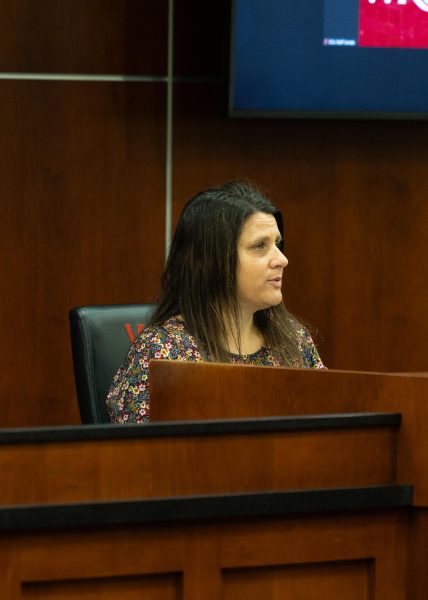Total solar eclipse lowers temperature
August 23, 2017
During Monday’s total solar eclipse, the sky went dim, street lights turned on and crickets started chirping.
While most people were looking up through eclipse viewers, Kentucky Mesonet and White Squirrel Weather, two meteorology groups, were looking at how the environment was changing.
White Squirrel Weather, a weather monitoring service at WKU, was tracking environmental changes from the roof of the Environmental Sciences and Technology Building, or EST, during the eclipse.
Joshua Durkee, an associate professor of meteorology who works with White Squirrel Weather, said he was surprised by how dark campus got during totality.
“I truly didn’t think it was going to look like that in Bowling Green,” Durkee said.
Durkee said he expected the changes they monitored to be consistent with environmental changes that occur when the sun goes down, but they were interested to see “to what extent” those changes occurred.
“I was a little surprised that it happened to the extent that it did,” Durkee said.
Durkee said the White Squirrel Weather team observed the temperature drop between five and seven degrees across campus, depending on where you were on campus. They also observed the humidity increase by about 10 percent on campus, which is consistent with what happens when the sun sets.
He also said they observed the atmospheric pressure decreasing throughout the day, but during totality, the atmospheric pressure rose. Durkee said when the pressure is rising, it “stabilizes the environment” and everything “gets quiet.”
“Everything just kind of sat still during that moment,” he said.
He said White Squirrel Weather recorded the solar radiation drop to zero during totality, as well as the ultraviolet index drop to zero.
While Durkee said most of what they observed was expected, there were a few measurements he was surprised by.
White Squirrel Weather has three weather stations across campus that measure a variety of environmental factors. One of those stations is in L.T. Smith Stadium. Durkee said in addition to measuring weather conditions in the stands, they also measure the turf and ground temperatures.
Durkee said the temperature of the turf on the football field only dropped two to three degrees during totality, as opposed to the five to seven degree temperature drop throughout the rest of campus. Additionally, the turf didn’t drop to its lowest temperature until totality this had actually ended.
Durkee said likely happened because of the material turf is made of and the way the material absorbs the sun’s energy. Durkee compared the change in temperature of the turf to “taking a pan off the stove,” saying it doesn’t cool off immediately.
Melissa Griffin, a quality assurance specialist for Kentucky Mesonet at WKU, was also standing on top of EST during totality. Kentucky Mesonet is a statewide “network of automated weather and climate monitoring stations” being developed at WKU, according to their website.
Griffin said as the eclipse approached totality, she noticed the wind speed drop, birds going quiet and crickets beginning to chirp.
“It was definitely throwing off the regular rhythms of nature,” Griffin said of the few moments of totality.
Griffin said in areas that experienced totality throughout the state, solar radiation dropped to zero at all locations, because the moon was completely blocking the sun. In areas of the state that only experienced a partial eclipse, solar radiation levels still dropped, although not to zero, Griffin said.
Temperatures also dropped as the eclipse approached totality. Griffin said she expected temperatures to drop by approximately five degrees, but in some places around the state, they dropped as much as ten degrees.
“It was definitely interesting to observe,” Griffin said.
Kentucky Mesonet’s data showed the temperature drop about 6 degrees during totality. At the WKU Farm, where Kentucky Mesonet has a monitoring station, the temperature dropped from 89.9 degrees before the eclipse to 84 degrees during totality. Another Kentucky Mesonet station, located near the Corvette Museum, showed the temperature dropping from 90.3 degrees to 84.8 degrees during the eclipse, Griffin said.
Griffin also said Kentucky Mesonet was gathering information on solar radiation, temperature, and wind speed every three seconds during the eclipse, instead of every five minutes as they usually do. Griffin said the complete data set is available on the Kentucky Mesonet website to view.
News editor Monica Kast can be reached at 270-745-6011 or [email protected].
























